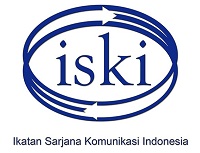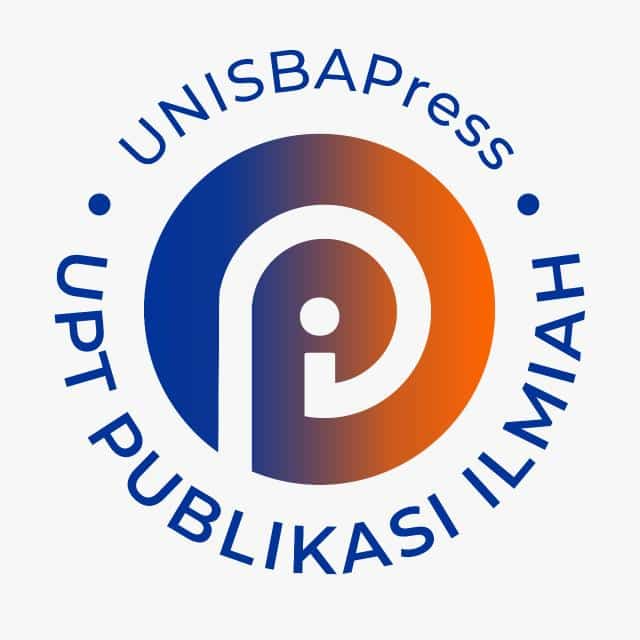Stuck on the Surface: Digitalization Case Studies of Three Local Televisions
DOI:
https://doi.org/10.29313/mediator.v16i2.2683Keywords:
localism, local television, public service media, television digitalizationAbstract
This research examines television digitalization policies from the perspective of local television broadcasters. Local television has the potential to benefit in the context of digitalization. However, our excessive attention to the centrality of broadcasting continues to threaten the existence and progress of local television. This research uses a qualitative approach with in-depth interview data collection methods. The research informants were broadcasters of three local television stations: Jogja TV (Yogyakarta Special Region/DIY), Tegar TV (Lampung), and Lombok TV (West Nusa Tenggara/NTB), as well as one informant from the Indonesian Local Television Association (ATVLI) management. The results of this study indicate that since the beginning of the digitalization process, the government has not considered the perspectives of local television broadcasters in implementing broadcast digitalization. The fundamental issue of balancing the use of digital broadcasting infrastructure, such as multiplexing equipment, by various parties regarding digitalization still remains. As a result, the continued benefits of broadcast digitalization expected by local television broadcasters are still far from expectations. Therefore, local television broadcasters have not thought far enough to vary and improve the quality of their programs because they are still stuck on these basic problems.References
Abdullah, A. (2020). Pola kebijakan digitalisasi penyiaran di Indonesia. ARISTO, 8(1), 76. https://doi.org/10.24269/ars.v8i1.2263
Barthel, M., Holcomb, J., Mahone, J., & Mitchell, A. (2016). Civic engagement strongly tied to local news habits: Local voters and those who feel attached to their communities stand out (pp. 1–9). Pew Research Center. https://www.pewresearch.org/journalism/2016/11/03/civic-engagement-strongly-tied-to-local-news-habits/
Bogaerts, E. (2017). Mediating the local: Representing Javanese cultures on local television in Indonesia. Journal of Southeast Asian Studies, 48(2), 196–218. https://doi.org/10.1017/S0022463417000042
Braman, S. (2007). The ideal v. The real in media localism: Regulatory implications. Communication Law and Policy, 12(3), 231–278. https://doi.org/10.1080/10811680701338532
Budiman, A. (2020). Perdebatan kepentingan kebijakan digitalisasi penyiaran di Indonesia (Studi kasus perumusan kebijakan digitalisasi penyiaran pada RUU Penyiaran di DPR 2009-2014 dan 2014-2019) [Interest disputes of broadcasting digitalization policy in Indonesia]. Jurnal Politica Dinamika Masalah Politik Dalam Negeri Dan Hubungan Internasional, 11(1), 107–126. https://doi.org/10.22212/jp.v11i1.1613
Cole, H., & Murck, P. (2007). The myth of the localism mandate: A historical survey of how the fcc’s actions belie the existence of a governmental obligation to provide local programming. Commlaw Conspectus: Journal of Communications Law and Technology Policy, 15(2), 339–371.
Collins, T. A. (1980). The local service concept in broadcasting: An evaluation and recommendation for change. William & Mary Law School. https://scholarship.law.wm.edu/facpubs/507/
Comer, J. C., & Wikle, T. A. (2013). Localism and American broadcasting in the age of satellite television. Papers in Applied Geography, 36, 210–219. https://www.researchgate.net/publication/284891097_Localism_and_American_broadcasting_in_the_age_of_satellite_television
Creswell, J. (2015). Riset pendidikan: Perencanaan, pelaksanaan, dan evaluasi riset kualitatif & kuantitatif (H. P. Soetjipto & S. M. Soetjipto, penerj.). Pustaka Pelajar.
Denzin, N. K. ., & Lincoln, Yvonna S. (2009). Handbook of qualitative research (Dariyatno, B. S. Fata, Abi, & J. Rinaldi, penerj.). Pustaka Pelajar.
Firmiyanti, R. D., Satria, A., & Saptono, I. T. (2019). Developing business strategy for local television network into the digital broadcasting competition in Indonesia: A JPM case study. Indonesian Journal of Business and Entrepreneurship. https://doi.org/10.17358/ijbe.5.2.168
Harjessi, P. N., Huseini, M., & Huseini, M. (2019). Kesiapan pemerintah dalam menghadapi digitalisasi televisi menurut perspektif organisasi pembelajar. Inovbiz: Jurnal Inovasi Bisnis, 7(2), 138. https://doi.org/10.35314/inovbiz.v7i2.1217
Hastjarjo, S. (2017). Local journalism in the new media landscape: Opportunities and challenges. KnE Social Sciences, 2(4), 21. https://doi.org/10.18502/kss.v2i4.863
Herman, H., & Rusadi, U. (2020). Dualitas struktur di balik RUU Penyiaran. Jurnal Riset Komunikasi, 3(2), 210–223. https://doi.org/10.38194/jurkom.v3i2.167
Heychael, M., & Wibowo, K. A. (2014). Melipat Indonesia dalam berita televisi: Kritik atas sentralisasi penyiaran.
Hutchinson, J. (2017). Public service media. In J. Hutchinson, Cultural Intermediaries (pp. 63–86). Springer International Publishing. https://doi.org/10.1007/978-3-319-66287-9_3
Hutchison, P. J. (2021). Media rituals and memory: Exploring the historical phenomenology of American local television. Journal of Communication Inquiry, 45(3), 225–243. https://doi.org/10.1177/0196859920977127
Ismail, E., Sari, S. D. S. R., & Tresnawati, Y. (2019). Regulasi penyiaran digital: Dinamika peran negara, peran swasta, dan manfaat bagi rakyat. Jurnal Komunikasi Pembangunan, 17(2), 124–145. https://doi.org/10.46937/17201926842
Kominfo. (2021). Satu menara untuk bersama. https://www.kominfo.go.id/content/detail/38270/satu-menara-untuk-bersama/0/tvdigital22
Kominfo. (2022). Batas akhir penghentian siaran TV analog (ASO) tetap 2 November 2022 sesuai amanat UU No. 11 Tahun 2020 Cipta Kerja. https://www.kominfo.go.id/content/detail/43590/siaran-pers-tentang-batas-akhir-penghentian-siaran-tv-analog-aso-tetap-2-november-2022-sesuai-amanat-uu-no-11-tahun-2020-tentang-cipta-kerja/0/siaran_pers
KPI. (2020). KPID dalam evaluasi izin perpanjangan televisi SSJ. https://www.kpi.go.id/index.php/id/umum/23-berita-daerah/35936-konten-lokal-jadi-sorotan-kpid-dalam-evaluasi-izin-perpanjangan-televisi-ssj
Supreme Court Decision Number 40 P/HUM/2022, 40 P/HUM/2022 (2022). https://putusan3.mahkamahagung.go.id/direktori/putusan/zaed50e4d2b38dd6a435303930353233.html
Mairita, D., M. Tazri, M. T., & Sumayah, S. (2021). Pola kebijakan KPID wilayah Riau dalam mengawasi digitalisasi penyiaran. Syntax Idea, 3(7), 1565–1575. https://doi.org/10.46799/syntax-idea.v3i7.1305
Maulana, N. M. (2020). Menggali kebijakan penyiaran digital di Indonesia. Jurnal Ilmu Komunikasi, 17(1), 60. https://doi.org/10.31315/jik.v17i1.2332
Mubarok, M., & Adnjani, M. D. (2018). Strategi sosialisasi migrasi sistem penyiaran analog ke digital di Jawa Tengah. Jurnal ASPIKOM, 3(4), 755. https://doi.org/10.24329/aspikom.v3i4.215
Mubarok, M., & Adnjani, M. D. (2020). Kesiapan industri TV lokal di Jawa Tengah menuju migrasi penyiaran dari analog ke digital. Communicare : Journal of Communication Studies, 7(1), 18. https://doi.org/10.37535/101007120202
Mudjianto, B. (2014). Sikap penyelenggara siaran televisi terhadap penyelenggaraan siaran televisi digital. Jurnal Studi Komunikasi Dan Media, 17(2), 123. https://doi.org/10.31445/jskm.2013.170201
Napoli, P. M. (2001). The localism principle in communications policymaking and policy analysis: Ambiguity, inconsistency, and empirical neglect. Policy Studies Journal, 29(3), 372–387. https://doi.org/10.1111/j.1541-0072.2001.tb02099.x
Nugroho, Y., Siregar, M. F., & Laksmi, S. (2012). Memetakan kebijakan media di Indonesia (Engaging Media, Empowering Society: Assessing Media Policy and Governance in Indonesia through the Lens of Citizens’ Rights). CIPG dan HIVOS. http://cipg.or.id/wp-content/uploads/2015/06/MEDIA-1-Kebijakan-Media-2012.pdf
Nurizar, A. (2020). Digital television regulation and its impact on Indonesia towards society 5.0. Komunikator, 12(2). https://doi.org/10.18196/jkm.122039
Poindexter, P. M., Heider, D., & McCombs, M. (2006). Watchdog or good neighbor?: The public’s expectations of local news. Harvard International Journal of Press/Politics, 11(1), 77–88. https://doi.org/10.1177/1081180X05283795
Radcliffe, D. (2018). How local journalism can upend the ‘fake news’ narrative. https://theconversation.com/how-local-journalism-can-upend-the-fake-news-narrative-104630
Rahayu. (2019). Ambiguitas, inkonsistensi, dan pengabaian kepentingan lokal dalam kebijakan penyiaran televisi di Indonesia. Jurnal Komunikasi, 14(1), 1–22. https://doi.org/10.20885/komunikasi.vol14.iss1.art1
Rahayu, T. P. (2016). Indonesia’s digital television migration: Controlling multiplexing, tackling competition. International Journal of Digital Television, 7(2), 233–252. https://doi.org/10.1386/jdtv.7.2.233_1
Rianto, P., Maharani, S., Gelgel, N. M. R. A., Wahyudi, R., & Afifi, S. (2023). “Capturing the watchdog”: How regional budget weaken the role of local media? Mediator: Jurnal Komunikasi, 16(1), 182–195.
Rianto, P., Wahyono, B., Yusuf, I. A., Zuhri, S., Cahyono, M. F., Rahayu, Masduki, & Siregar, A. E. (2012). Digitalisasi televisi di Indonesia: Ekonomi politik, peta persoalan, dan rekomendasi kebijakan. PR2Media : Yayasan Tifa.
Saudi, Y., & Rahmawati, E. (2023). The urgency of digital broadcasting for public interest to get quality broadcasting services (Study on TVRI NTB lovers group). KOMUNIKE, 15(1), 93–105. https://doi.org/10.20414/jurkom.v15i1.7590
Scott, C. (2018). “More views, angles and perspective”: Why community journalism may be the future of news. https://www.journalism.co.uk/news/-more-views-angles-and-perspective-why-community-journalism-may-be-the-future-of-news/s2/a716197/
Setiawan, Y. L., Puryanto, P., & Nasir, J. (2021). The utilization of digital communication media Genre Radio in successful BKKBN programs. Mediator: Jurnal Komunikasi, 14(2), 168–182. https://doi.org/10.29313/mediator.v14i2.8417
Sjuchro, D. W., Surachman, A. Y., & Achmad, W. (2022). Digital governance on broadcasting industry. Journal of Governance, 7(2). https://doi.org/10.31506/jog.v7i2.15414
Supadiyanto, S. (2021). Regulation issues of digital broadcasting in Job Creation Law. Jurnal ASPIKOM, 6(2), 329. https://doi.org/10.24329/aspikom.v6i2.894
Sutika, I. M. (2015). Kontribusi program televisi berjaringan dalam memenuhi kebutuhan informasi masyarakat lokal (Studi pada KPID Bali). Jurnal Kajian Ilmu Komunikasi, Vol 11 No 2 (2015)(Vol 11 No 2 (2015): Jurnal Kajian Ilmu Komunikasi), 1–15.
Tabroni, R. (2018). Penerapan “Civic Journalism” PR FM dalam membangun iklim demokrasi di Jawa Barat. Mediator: Jurnal Komunikasi, 11(2), 140–154. https://doi.org/10.29313/mediator.v11i2.3726
Takariani, C. S. D. (2013). Penyiaran digital: Tantangan masa depan televisi lokal. Penyiaran di Era Digital, 29–46. https://balitbangsdm.kominfo.go.id/upt/bandung/publikasi-penyiaran-di-era-digital-10-6
Tristani, G. (1998). Keeping the local in local radio. Federal Communications Commission. https://transition.fcc.gov/Speeches/Tristani/spgt811.html
Wahyuni, H. I. (2014). Digitisation in Indonesian broadcasting: Detriment or advantage? Public perspective analysis on digitisation in the Indonesian broadcasting context. Media Asia, 41(1), 43–54. https://doi.org/10.1080/01296612.2014.11689999
Yanich, D. (2015). Local TV, localism, and service agreements. Journal of Media Economics, 28(3), 162–180. https://doi.org/10.1080/08997764.2015.1063500
Downloads
Published
Issue
Section
License
Copyright (c) 2023 Lukas Deni Setiawan

This work is licensed under a Creative Commons Attribution-ShareAlike 4.0 International License.























